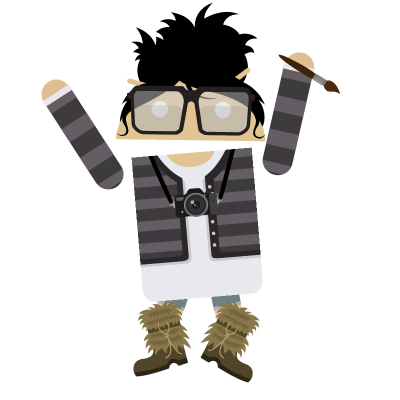Ways To Add CSS
Next ❯CSS Color
HTML pages format the document according to css information
- turned_in_notThis can be done in three ways
- External CSS
- Internal CSS
- Inline CSS
External CSS
- Declare style sheet rules in a separate .css file and then include that file in your HTML document using
<link>tag -
<link>element goes inside the<head>section - Mainly used to style website, like common style for your whole web pages
Example:
- turned_in_notExternal CSS
"style.css" file<!DOCTYPE html> <html> <head> <title>HTML External CSS Example</title> <link rel="stylesheet" type="text/css" href="style.css"> </head> <body> <p className="blue">This text is blue in color</p> <p className="red">This text background is kind of red</p> </body> </html>
OUTPUT.blue { color:blue; } .red { background:#ff6b6b; color:white; }This text is blue in color
This text background is kind of red
Internal CSS
- Preferred, declare style sheet rules in header (
<head>) section of the HTML document using<style>tag - Mainly used to add specific style to a page, like specific style for your specific page
- Note! You can also declare style sheet rules in body (
<body>) section but don't repeat the rules css-property otherwise browser will pick the last repeated rule css-property which it finds on your web page
Example:
- turned_in_notInternal CSS
OUTPUT<!DOCTYPE html> <html> <head> <title>HTML Internal CSS Example</title> <style> .text1 { font-size:25px; } .red { color:red; } </style> </head> <body> <p className="text1">This text font is 25px</p> <p className="red">This text is red in color</p> </body> </html>This text font is 25px
This text is red in color
Inline CSS
- Declare style sheet rules directly along-with the HTML elements using
styleattribute - Mainly used to add style to specific element in a web page
Example:
- turned_in_notInline CSS
OUTPUT<!DOCTYPE html> <html> <head> <title>HTML Inline CSS Example</title> </head> <body> <h5 style="color:purple;">Purple Heading</h5> <p style="color:green;">Text color is green</p> <p style="color:red;font-size:10px;">This text is red and 10px in size</p> </body> </html>Purple Heading
Text color is green
This text is red and 10px in size
Highest Preference
What if any Selector Properties are defined in all the 3 format, the one which is selected is according to the priority as given below- turned_in_notHighest Priority
- Inline CSS
- External CSS/Internal CSS (One which is defined later/last in web page)
- Browser Default
- So, Inline CSS properties has the highest priority among all
- Among External CSS & Internal CSS Say, External CSS defined 1st then later Internal CSS defined, in this case Internal CSS properties has highest priority then External CSS properties and vice versa
- At the end, if no CSS properties are defined then Browser Default will execute for that
Example:
External css : "style.css"
h5{
color:blue;
}- turned_in_notExternal CSS defined after Internal CSS
OUTPUT<!DOCTYPE html> <html><head> <style> h5{ color:red; } </style> <link rel="stylesheet" type="text/css" href="style.css"> </head> <body> <h5>Checkout the text color</h5> </body></html>Checkout the text color
- label_outlineExternal CSS defined before Internal CSS
OUTPUT<!DOCTYPE html> <html><head> <link rel="stylesheet" type="text/css" href="style.css"> <style> h5 { color:red; } </style> </head> <body> <h5>Checkout the text color</h5> </body></html>Checkout the text color
*Important
You can override all the Preference via keyword !important
- Just add the keyword at the end of specific property value
Here, below example overrides the inline css
<!DOCTYPE html>
<html>
<head>
<style>
h1{ color:red !important;}
</style>
</head>
<body>
<h1 style="color:blue">Checkout the text color</h1>
</body>
</html>Checkout the text color
- turned_in_notFinal Highest Priority
- Inline CSS with
!important - External CSS/Internal CSS with
!important(One which is defined later/last in web page) - Inline CSS
- External CSS/Internal CSS (One which is defined later/last in web page)
- Browser Default
- Inline CSS with
❮ Prev CSS Selectors
Next ❯CSS Color







 So,
So,